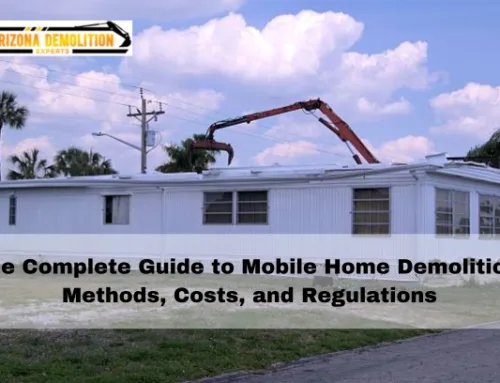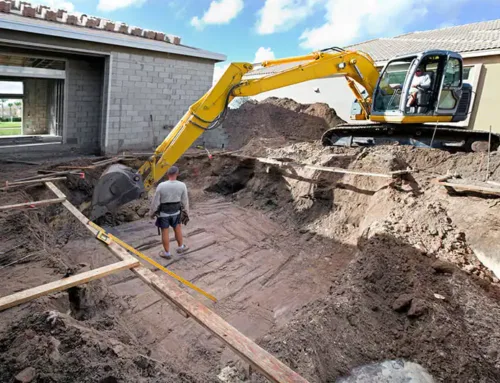When we think of demolition, we often envision the dramatic implosion of towering structures or the gradual dismantling of buildings. However, behind these awe-inspiring spectacles lies a meticulous and scientific process known as controlled demolition. Demolition contractors are the unsung heroes who master the art of precision and strategy to bring down structures safely and efficiently, transforming landscapes and making way for new developments. In this blog, we will delve into the fascinating world of controlled demolition, exploring the science, techniques, and expertise that demolition contractors employ in their craft.
The Science Behind Controlled Demolition
Controlled demolition is far from a haphazard endeavor; it is a carefully calculated process rooted in physics, engineering, and extensive knowledge of structural dynamics. Before a demolition project even begins, demolition contractors conduct thorough structural assessments to understand the building’s composition, load-bearing elements, and potential weak points. This information is crucial in formulating a precise demolition plan that maximizes safety and minimizes collateral damage.
One of the key principles of controlled demolition is gravity. Demolition contractors utilize gravity to their advantage by strategically weakening or removing key support elements, allowing the force of gravity to aid in the controlled collapse of the structure. This approach prevents unplanned collapses, reduces structural damage to nearby buildings, and enhances overall safety.
Precision Techniques in Controlled Demolition
1. **Implosion:** The iconic image of a building collapsing in on itself is often achieved through implosion. Demolition contractors carefully place explosives at specific points within the structure, creating a controlled sequence of detonations that cause the building to collapse inwards. This technique requires meticulous planning and coordination to ensure that the building’s structural integrity is compromised in the desired manner.
2. **Sectional Dismantling:** In cases where implosion is not feasible due to proximity to other structures or environmental concerns, demolition contractors may opt for sectional dismantling. This technique involves deconstructing the building piece by piece, starting from the top and working downwards. Cranes, excavators, and other heavy machinery are used to carefully remove sections of the structure in a controlled manner.
3. **Non-Explosive Methods:** Some controlled demolition projects require non-explosive methods, such as using hydraulic shears, concrete crushers, or wrecking balls. These techniques allow for precise removal of specific elements while minimizing noise, dust, and vibration, which is crucial in densely populated urban areas.
The Role of Technology in Controlled Demolition
Advancements in technology have significantly enhanced the capabilities of demolition contractors. Computer simulations and modeling software enable contractors to simulate the collapse sequence before any physical work begins. This allows them to identify potential challenges, adjust the demolition plan, and optimize safety measures. Additionally, drones and remote-controlled equipment provide real-time data and insights, enabling contractors to monitor the progress of the demolition from a safe distance.
Safety First: Mitigating Risks in Controlled Demolition
Safety is paramount in controlled demolition, and demolition contractors spare no effort in ensuring the well-being of their teams, nearby residents, and surrounding structures. Rigorous safety protocols are implemented, and all personnel undergo extensive training to handle hazardous materials, operate heavy machinery, and execute precise demolition techniques.
Structural stabilization techniques, such as using temporary support structures or reinforcing vulnerable areas, are often employed to minimize the risk of unintended collapses during the demolition process. Dust and debris containment measures are also implemented to prevent the spread of hazardous materials and pollutants.
Case Studies: Masterpieces of Controlled Demolition
1. **The Kingdome, Seattle:** The controlled implosion of the Kingdome, an iconic sports stadium, demonstrated the finesse of demolition contractors in managing a high-profile project. Despite being located in a densely populated area, demolition experts strategically placed explosives to ensure a safe and spectacular implosion, with the debris falling within the stadium’s footprint.
2. **The Prudential Tower, Boston:** The controlled demolition of a portion of the Prudential Tower showcased the precision of sectional dismantling. Demolition contractors carefully deconstructed a section of the tower without affecting the integrity of the rest of the building, allowing for the expansion of the surrounding shopping center.
Controlled demolition is a blend of science, engineering, technology, and artistic precision. Demolition contractors are the masterminds behind the orchestrated collapse of structures, embodying a unique blend of expertise and creativity. As we gaze upon the controlled demolition of buildings, let us appreciate the hidden artistry behind these feats, where safety, precision, and innovation converge to shape our evolving urban landscapes.



